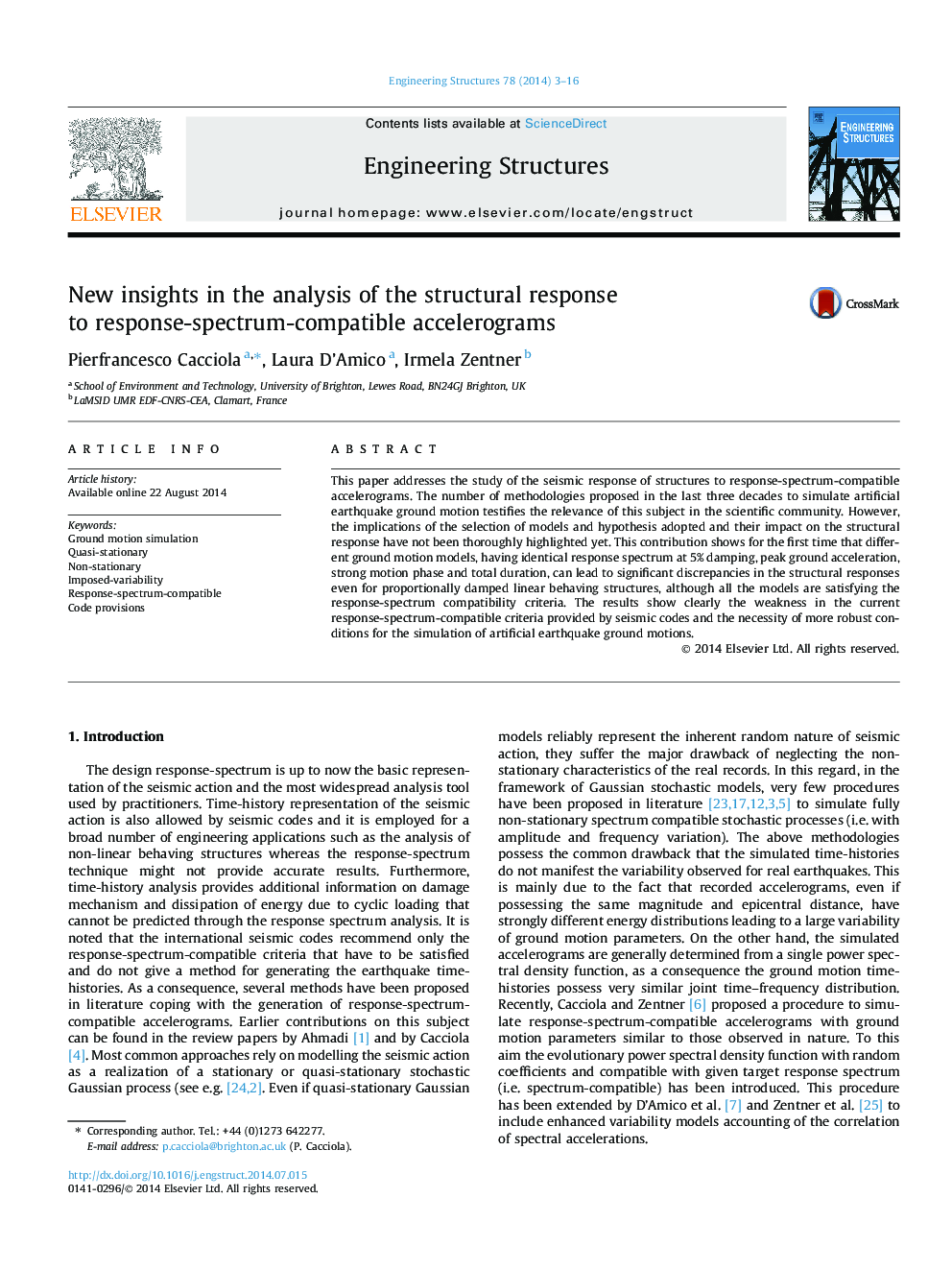| Article ID | Journal | Published Year | Pages | File Type |
|---|---|---|---|---|
| 266475 | Engineering Structures | 2014 | 14 Pages |
•Seismic analysis of structural systems to response-spectrum-compatible accelerograms according to the Eurocode provisions.•Evident discrepancies in the peak displacements for the three response-spectrum-compatible models adopted.•Weakness of the response-spectrum-compatible criteria available now in the seismic codes.
This paper addresses the study of the seismic response of structures to response-spectrum-compatible accelerograms. The number of methodologies proposed in the last three decades to simulate artificial earthquake ground motion testifies the relevance of this subject in the scientific community. However, the implications of the selection of models and hypothesis adopted and their impact on the structural response have not been thoroughly highlighted yet. This contribution shows for the first time that different ground motion models, having identical response spectrum at 5% damping, peak ground acceleration, strong motion phase and total duration, can lead to significant discrepancies in the structural responses even for proportionally damped linear behaving structures, although all the models are satisfying the response-spectrum compatibility criteria. The results show clearly the weakness in the current response-spectrum-compatible criteria provided by seismic codes and the necessity of more robust conditions for the simulation of artificial earthquake ground motions.
